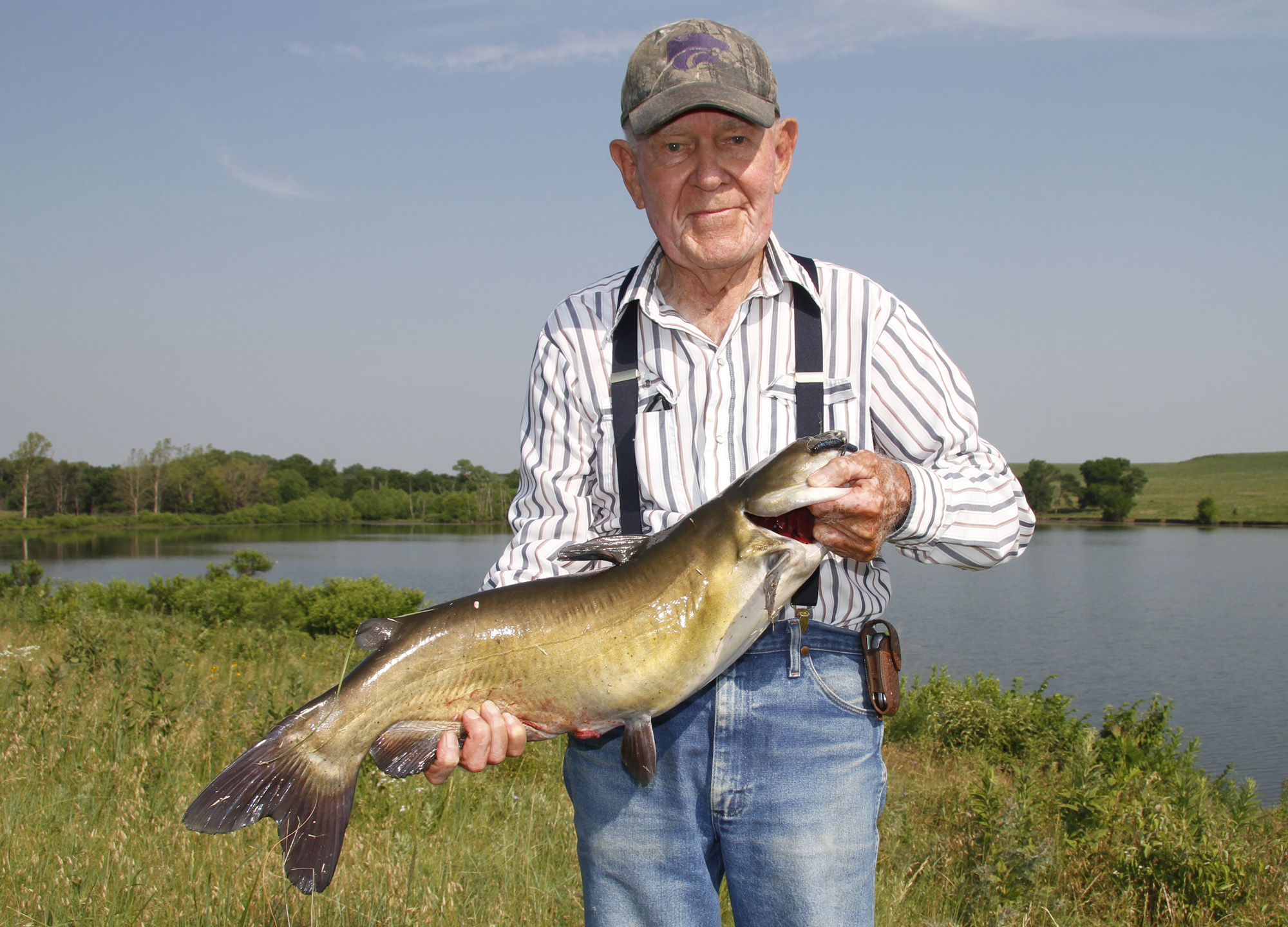
Summertime is prime time for catching channel catfish in Kansas. The whiskered fish thrive in thousands of waters, angling techniques are simple and the state officials are working to up your odds in many ways.
Where
About every impoundment and stream in Kansas holds channel cats. They naturally thrive in major reservoirs. Kansas’ scores of state and community lakes are always good because they get the majority of the about 500,000 channel cat stocked annually by the Kansas Department of Wildlife, Parks and Tourism. The agency’s Community Fisheries Assistance Program leases free public access to over 200 community lakes and ponds.
Gear
About any rod and reel that’ll cast will work. Ideally use something with 8-14 pound-test line. Law allows you to fish two poles at the same time. A permit can be purchased for using a third. Buy a selection of hooks that include size 1 and 1/0 regular hooks and #6 and #8 treble hooks. Weights should include some pea-sized clamp on split-shot and 1/4oz. to 1/2oz egg sinkers
Bait
Natural baits, like worms (best hand-dug rather than bait shop) grasshoppers, and dead minnows work. Spoiled shrimp, turkey and chicken livers remain popular. Fresh-cut hunks of bluegill, green sunfish and shad can be great. Chunks of cheap hot dogs will work as will chicken breast soaked in Kool-Aid and/or garlic. Most bait shops carry smelly, paste-like “dip” baits. Be sure to buy the special hooks it takes to fish with dip baits.
When
Kansas catfish can be caught any time of the day or night. Still, the first and last two hours of daylight are often productive but go when you can go. Cold fronts often slow the fishing considerably. Long periods of stable weather, including heat and drought, are usually good.
How
Most baits should be fished on the bottom, where catfish primarily feed. The best rig is to slide an egg sinker down the line, lightly clamp a split-shot about 18” from the end of the line. You want the line to flow easily through the sinker so fish don’t feel and resistance. Use the treble-hook for things like liver, and special “dip” hooks for that bait. A regular J-shaped hook works well for other baits.
Lakeside advice
Don’t assume the channel cats are in the middle of the lake. Often they’re fairly near shore, especially if brush or weedlines are nearby. If using more than one rod, cast to different locations until you find fish. After a rain, fish where inflow might be bringing food to the fish. Better yet, go to where you know the fish are being mechanically fed. Often the best place to catch summer catfish is near the scores of fish feeders Wildlife and Parks has floating in lakes and reservoirs. Most throw food pellets at least twice a day to concentrate the catfish and keep them feeding. If fishing on the bottom isn’t working by a feeder, try dropping bait about two feet below a float since the catfish are getting most of their groceries near the surface.
Go with a pro
Kansas has dozens of professional fishing guides, many of whom specialize in catfish. Rader Lodge runs charter boats all summer, for cheap prices, on Glen Elder Reservoir. (www.raderlodge.com) 785-545-3476.
Merlyn Johnson’s Bluecatter’s Guide Service goes for blue catfish at Milford Reservoir. Blues get much bigger than channel cat. Johnson likes to release all blues over about 10 pounds to protect the resource, but will clean fish under 10 pounds for clients. 316-772-3982.
For more information on catfishing in Kansas, go to www.ksoutdoors.com.




